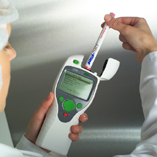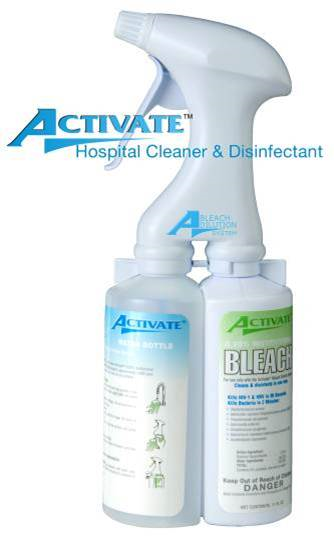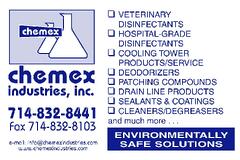Combatting C. Diff & CRE in the Workplace
Cruise ships have the infamy of numerous Norovirus gastroenteritis outbreaks, in one situation affecting 6 consecutive cruises. The viral transmission mode was feco-orally through food and water, directly from person to person and by environmental contamination.
Disease transmission, although not as well revealed, as in the case of cruise ships, happen frequently in health care, schools, industrial and institutional environments.
Executive Housekeeping and supervisory personnel at hospitals, nursing homes and other healthcare facilities are clearly cognizant and highly responsive to the progression of superbugs in the workplace.
With the onslaught of countless pathogenic microorganisms & lethal viruses throughout the last two decades, the accountability factor has risen, in the quest to maintain a healthy environment. SARS, Avian Flu Strains, MRSA, Norovirus, C. Diff., Acinetobacter and numerous other antibiotic resistant strains, have become all too familiar. VRE (vancomycin-resistant enterococci) infections have increased over the last five years. These VRE infections usually occur in hospitalized patients with serious underlying illnesses such as cancer, blood disorders, kidney disease or immune deficiencies. People in good health are not typically at risk of infection, but health care workers may play a role in transmitting the organisms, especially if careful hand washing and other infection control precautions are not practiced.
VRE, like many bacteria, can be spread from one person to another through casual contact or through contaminated objects.
Watch out for CRE the newest superbug to cause mayhem. The CDC reports the following:
Drug-resistant germs called carbapenem-resistant Enterobacteriaceae, or CRE, are on the rise and have become more resistant to last-resort antibiotics during the past decade, according to a new CDC Vital Signs report. These bacteria are causing more hospitalized patients to get infections that, in some cases, are impossible to treat.
CRE are lethal bacteria that pose a triple threat:
- Resistance: CRE are resistant to all or nearly all, the antibiotics we have - even our most powerful drugs of last-resort.
- Death: CRE have high mortality rates – CRE germs kill 1 in 2 patients who get bloodstream infections from them.
- Spread of disease: CRE easily transfer their antibiotic resistance to other bacteria. For example, carbapenem-resistant klebsiella can spread its drug-destroying weapons to a normal E. coli bacteria, which makes the E. Coli resistant to antibiotics also. That could create a nightmare scenario since E. coli is the most common cause of urinary tract infections in healthy people.
Once again, the majority of CRE infections occur in people receiving significant medical care. CRE are usually transmitted from person-to-person, often on the hands of health care workers. CRE is also spread through contact with open wounds or stool.
What’s truly alarming is CRE’s ability to share its resistance with common bacteria, which could make afflictions such as diarrhea and urinary tract infections untreatable. In addition, CRE infections have a high mortality rate — up to 50 percent — so this superbug is a lot deadlier than C. diff or MRSA.
HOW TO WAGE BATTLE WITH THE NEW SUPERBUGS
As with any superbug, it’s paramount that doctors, nurses and visitors wash their hands (and for the recommended 30 seconds). Hand sanitizer dispensers should be well stocked and conveniently in-place. In addition, rooms with CRE-infected patients need to be cleaned and disinfected more often and custodians should focus on touch points, including light switches, faucets, bed rails, charts, door handles and privacy curtains.
While antibiotics cannot always treat these infections, good cleaning and hygiene can prevent them from spreading. It’s safe to say when it comes to CRE and C. Diff, the best offense is a good defense.
If you hear the language “cleaning with bleach” as a methodology to disinfection, you should question that practitioner. Paramount is that bleach has no cleaning efficacy and the EPA clearly states that a surface must be cleaned, prior to disinfection.
(There are Pre-Mixed, Ready-to-Use Hospital Grade Cleaners/Disinfectants with Bleach Available - e.g. "DISPATCH". This item is registered to kill C. Diff spores in five minutes.
Beware of using regular bleach as bleach can be highly corrosive to surfaces and may cause severe irritation or damage to eyes, skin, and mucous membranes.
In addition, remove intravenous lines & catheters as early as possible in order to remove the risk of infection.
Hand washing, hand washing and more hand washing… Proper disinfection of surfaces is critical because C. diff & these superbugs, not only live on surfaces, but they can spread to and thrive on hands. As soon as clean hands touch contaminated surfaces they are not clean anymore. Hand washing using soap & water is quite effective, as the physical act of washing/scrubbing, actually removes bacteria from skin surfaces.
Many of the new superbugs are not killed off by alcohol sanitizers. –so, hand washing is the prime requisite.
Become cognizant of materials entering patient rooms and surgery centers. Often the mopping buckets themselves are highly contaminated, as are the mops, which can be loaded with mold, if not previously laundered and dried properly. Purses, attaché cases, cell phones, boxed gifts, etc. that may have been in contact with floor surfaces or other contaminated areas are highly suspect.





